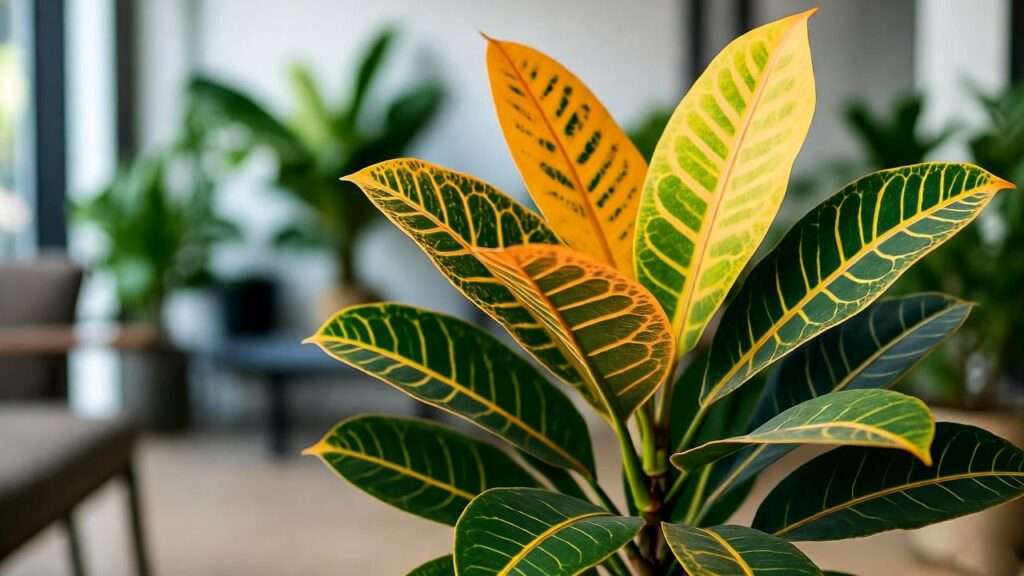Imagine transforming your living space with a burst of tropical vibrancy that captivates every visitor. The banana croton plant (Codiaeum variegatum ‘Banana’), with its glossy, banana-shaped leaves in radiant yellow-green hues, is the perfect houseplant to achieve this. Whether you’re a novice plant parent or a seasoned gardener, mastering banana croton plant care can elevate your indoor jungle or outdoor garden to new heights. But these tropical beauties can be finicky without the right approach. In this comprehensive guide, I’ll share expert-backed tips—drawn from years of cultivating crotons and insights from horticultural professionals—to help you grow a thriving banana croton plant. From light and watering to pest control and propagation, this article is your roadmap to stunning foliage that steals the show. Ready to dive into the world of vibrant plant care? Let’s get started! 🌱
1. Understanding the Banana Croton Plant 🌱
1.1 What Is a Banana Croton Plant?
The banana croton plant, scientifically known as Codiaeum variegatum ‘Banana,’ is a striking cultivar of the croton family, celebrated for its vivid, banana-shaped leaves. Unlike its more colorful croton cousins with red, orange, or pink variegation, the banana croton boasts bright yellow-green foliage that mimics the cheerful hue of ripe bananas. Native to tropical regions like Southeast Asia and Oceania, this evergreen shrub thrives in warm, humid environments. Its glossy leaves and compact growth (typically 2–4 feet indoors) make it a favorite for adding tropical flair to homes, offices, or shaded patios.
1.2 Benefits of Growing a Banana Croton Plant
Why choose a banana croton? Beyond its eye-catching appearance, this plant offers multiple benefits:
- Aesthetic Appeal: Its vibrant foliage serves as a bold focal point, complementing modern or bohemian decor.
- Air Purification: Studies, like those from NASA’s Clean Air Study, suggest crotons contribute to cleaner indoor air by filtering toxins.
- Versatility: It thrives indoors in pots or outdoors in warm climates (USDA Zones 9–11).
- Emotional Boost: The bright colors can reduce stress and enhance mood, as noted in research on biophilic design.
Whether you’re decorating a cozy apartment or a sprawling garden, the banana croton plant delivers unmatched vibrancy.
2. Optimal Growing Conditions for Banana Croton Plants ☀️
To keep your banana croton plant thriving, replicating its tropical habitat is key. Here’s how to nail the essentials.
2.1 Light Requirements
Banana crotons crave bright, indirect sunlight to maintain their vivid leaf color. Place them near east- or west-facing windows indoors, where they receive 4–6 hours of filtered light daily. Outdoors, choose a shaded patio or area with dappled sunlight. Direct sun can scorch leaves, causing brown, crispy edges, while too little light dulls their vibrant yellow-green hue.
Expert Tip: Use a light meter to ensure 1000–2000 foot-candles, the sweet spot for optimal growth. If natural light is limited, supplement with a full-spectrum grow light (e.g., LED grow bulbs with 20–40 watts). Rotate the plant every few weeks to ensure even light exposure.
2.2 Temperature and Humidity
As a tropical plant, the banana croton prefers temperatures between 60–85°F (15–29°C). Avoid exposing it to drafts or temperatures below 50°F, which can trigger leaf drop. High humidity (50–70%) is crucial to mimic its native environment. In dry climates or heated homes, boost humidity with:
- A humidifier set to 60% humidity.
- A pebble tray filled with water beneath the pot.
- Regular misting with distilled water (avoid tap water to prevent mineral buildup).
Warning: Sudden temperature fluctuations, like placing the plant near air vents, can stress it, leading to wilting or leaf loss.
2.3 Soil Preferences
Banana crotons thrive in well-draining, slightly acidic soil (pH 5.5–6.5). A mix of 50% potting soil, 25% perlite, and 25% peat moss or coco coir ensures proper drainage and aeration. Avoid heavy, clay-based soils that retain water, as they increase the risk of root rot.
Pro Tip: Choose a pot with drainage holes and add a layer of pebbles at the bottom to enhance drainage. Test soil pH with a meter for precision, especially if mixing your own.
3. Step-by-Step Care Guide for Banana Croton Plants 🛠️
Caring for a banana croton plant is straightforward with the right routine. Here’s how to keep it flourishing.
3.1 Watering Best Practices
Water your banana croton when the top inch of soil feels dry, typically every 7–10 days indoors. Use room-temperature water and pour until it drains from the pot’s bottom, ensuring the roots are hydrated but not soggy. Overwatering is a common mistake, leading to yellowing leaves or root rot, while underwatering causes drooping or crispy foliage.
How to Check: Stick your finger into the soil or use a moisture meter. If the soil feels damp, wait a few days before watering again. In winter, reduce watering as growth slows.
Expert Insight: “Consistency is key,” says Dr. Emily Carter, a horticulturist with 15 years of tropical plant experience. “Water thoroughly but sparingly, and always ensure excess water drains away.”
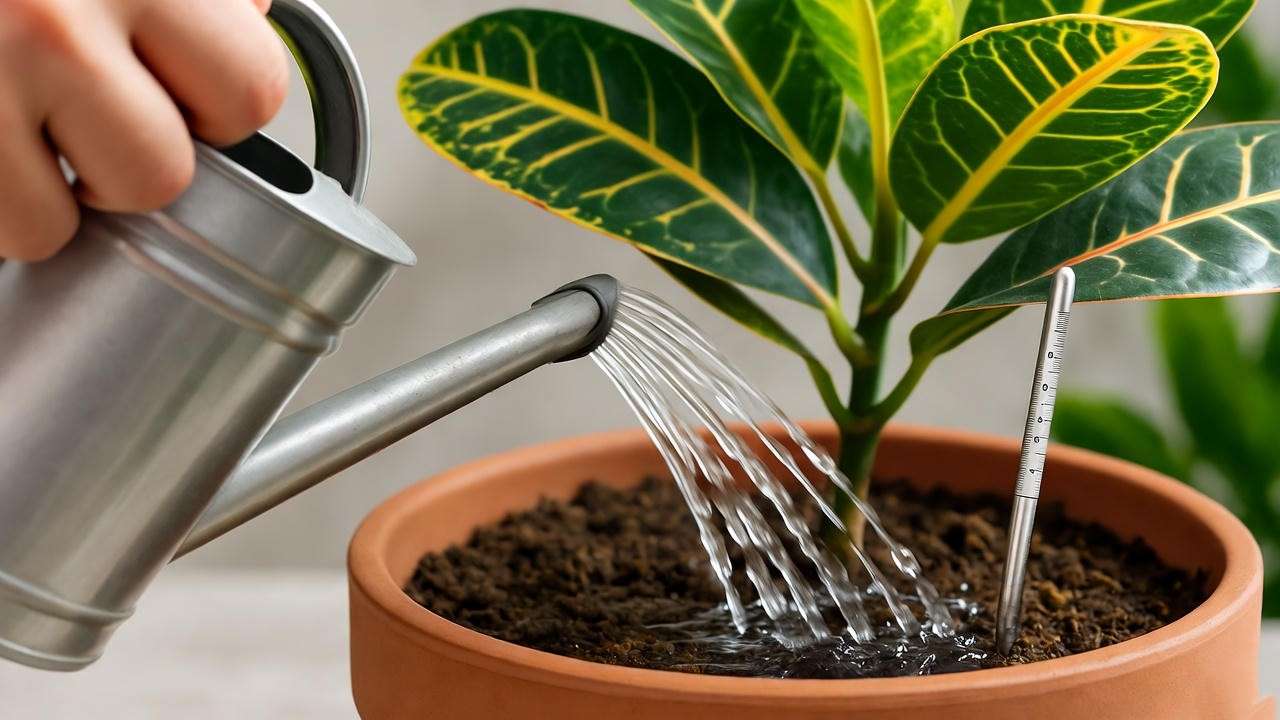
3.2 Fertilizing for Healthy Growth
Feed your banana croton with a balanced, water-soluble fertilizer (e.g., 10-10-10 or 20-20-20) every 4–6 weeks during spring and summer. Dilute to half-strength to avoid fertilizer burn. In fall and winter, reduce to every 8–10 weeks as the plant enters a dormant phase.
Organic Options: For eco-conscious growers, try compost tea or fish emulsion for a gentle nutrient boost. Always apply fertilizer to moist soil to enhance absorption and prevent root damage.
Caution: Over-fertilizing can cause leaf tip burn or salt buildup in the soil. Flush the pot with water every few months to remove excess salts.
3.3 Pruning and Maintenance
Pruning keeps your banana croton bushy and healthy. Use clean, sharp shears to trim leggy stems just above a leaf node, encouraging new growth. Remove yellow or damaged leaves to maintain aesthetics and prevent disease. Wipe leaves with a damp cloth monthly to remove dust, which can block photosynthesis.
Seasonal Adjustments: In winter, limit pruning to minimal maintenance, as the plant grows slowly. In spring, prune more aggressively to shape the plant and promote fullness.
Pro Tip: Sterilize pruning tools with rubbing alcohol to prevent spreading pathogens.
4. Common Problems and Solutions 🩺
Even with proper care, banana crotons can face challenges. Here’s how to diagnose and fix common issues.
4.1 Pest Management
Banana crotons are susceptible to pests like spider mites, mealybugs, and scale insects. Signs include sticky residue, fine webbing, or discolored leaves.
Solutions:
- Spray with neem oil or insecticidal soap (diluted as per instructions).
- Wipe leaves with a cloth dipped in soapy water for small infestations.
- For severe cases, isolate the plant and treat weekly until pests are gone.
Prevention: Maintain 50–70% humidity and inspect leaves weekly, especially undersides. Good air circulation also deters pests.
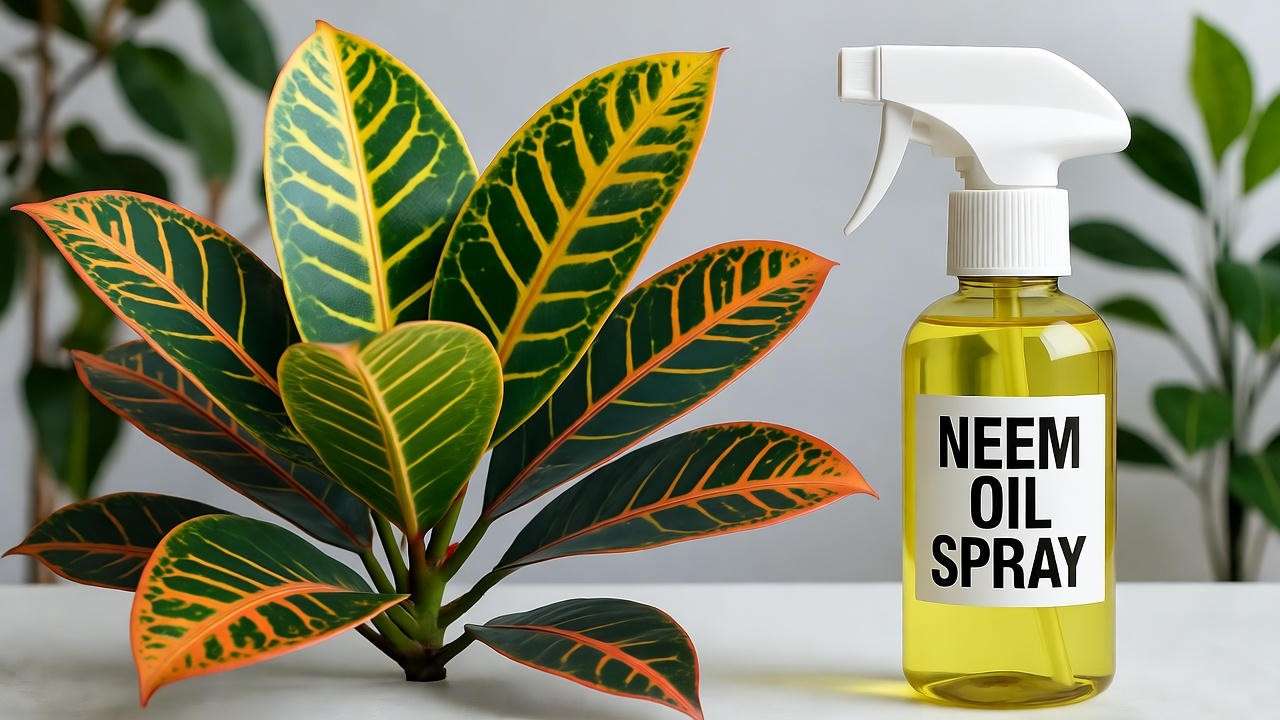
4.2 Leaf Drop and Discoloration
Leaf drop or fading color often stems from:
- Low Light: Move to a brighter spot or add a grow light.
- Overwatering/Underwatering: Check soil moisture and adjust watering.
- Temperature Stress: Ensure stable temperatures above 60°F.
Troubleshooting: Monitor for early signs like wilting or yellowing. Adjust one factor at a time (e.g., light or water) to pinpoint the cause.
Expert Tip: “Leaf drop is the plant’s cry for help,” notes Dr. Carter. “Act fast to adjust conditions, and your croton will bounce back.”
4.3 Root Rot and Fungal Issues
Root rot, caused by overwatering or poor drainage, shows as mushy roots or foul-smelling soil. To fix:
- Remove the plant from its pot and trim affected roots with sterilized shears.
- Repot in fresh, well-draining soil.
- Adjust watering to prevent recurrence.
Prevention: Always use pots with drainage holes and avoid letting the plant sit in standing water.
5. Propagating Banana Croton Plants 🌱
Propagating your banana croton is a rewarding way to expand your collection or share with friends. Spring or early summer is the best time for success.
5.1 Why Propagate?
Propagation allows you to create new plants for free, rejuvenate an older croton, or gift to fellow plant lovers. It’s also a fun way to engage with your plant’s growth cycle.
5.2 Step-by-Step Propagation Guide
Method 1: Stem Cuttings
- Select a healthy stem with 3–5 leaves, about 4–6 inches long.
- Cut just below a node using sterilized shears.
- (Optional) Dip the cut end in rooting hormone to speed up rooting.
- Place the cutting in water or a moist soil mix (50% perlite, 50% peat moss).
- Keep in a warm, humid spot (70–80°F) with indirect light.
- Roots should form in 4–6 weeks. Transplant to a pot once roots are 1–2 inches long.
Method 2: Air Layering (for larger plants)
- Make a small upward cut on a healthy stem and wrap it with moist sphagnum moss.
- Cover with plastic wrap to retain moisture.
- Roots form in 6–8 weeks; cut and pot the new plant.
Success Tip: Use a clear container for water propagation to monitor root growth. Maintain humidity with a plastic bag or propagator dome.
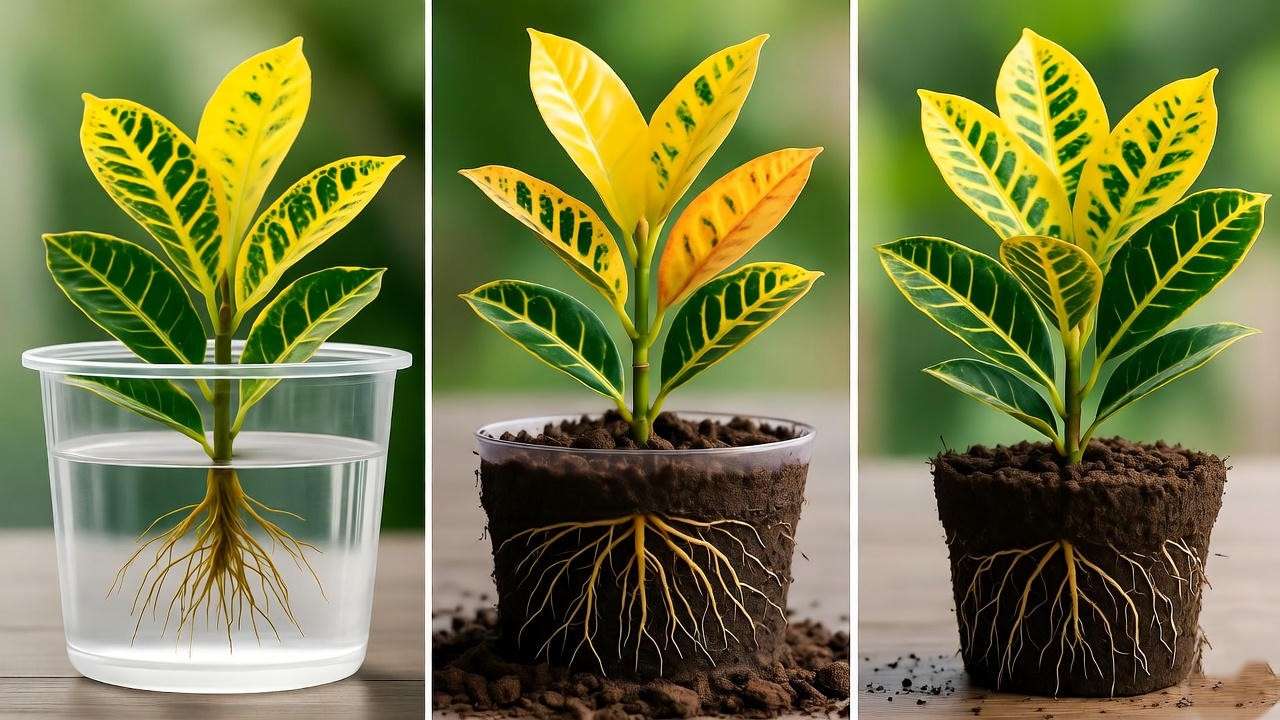
6. Design and Display Ideas for Banana Croton Plants 🎨
The banana croton plant’s vibrant foliage makes it a natural showstopper in any setting. Whether indoors or outdoors, strategic placement and styling can enhance its beauty and elevate your space. Here’s how to showcase your croton effectively.
6.1 Indoor Styling Tips
Indoors, the banana croton shines as a centerpiece or accent plant. Its bright yellow-green leaves pair beautifully with neutral or bold decor. Consider these ideas:
- Centerpiece Display: Place in a decorative ceramic pot on a coffee table or shelf to draw attention. Choose pots in white, navy, or terracotta to complement the foliage.
- Corner Accent: Position in a well-lit corner with a tall, narrow pot to add height and drama to your room.
- Plant Pairings: Combine with low-maintenance plants like pothos, snake plants, or peace lilies for a lush indoor jungle. The croton’s bright leaves contrast beautifully with darker green foliage.
- Shelving Star: Place on a plant stand or floating shelf near a window to highlight its glossy texture.
Styling Tip: Use a pot with a modern geometric design or a woven basket for a bohemian vibe. Ensure the pot has drainage holes to prevent water buildup.
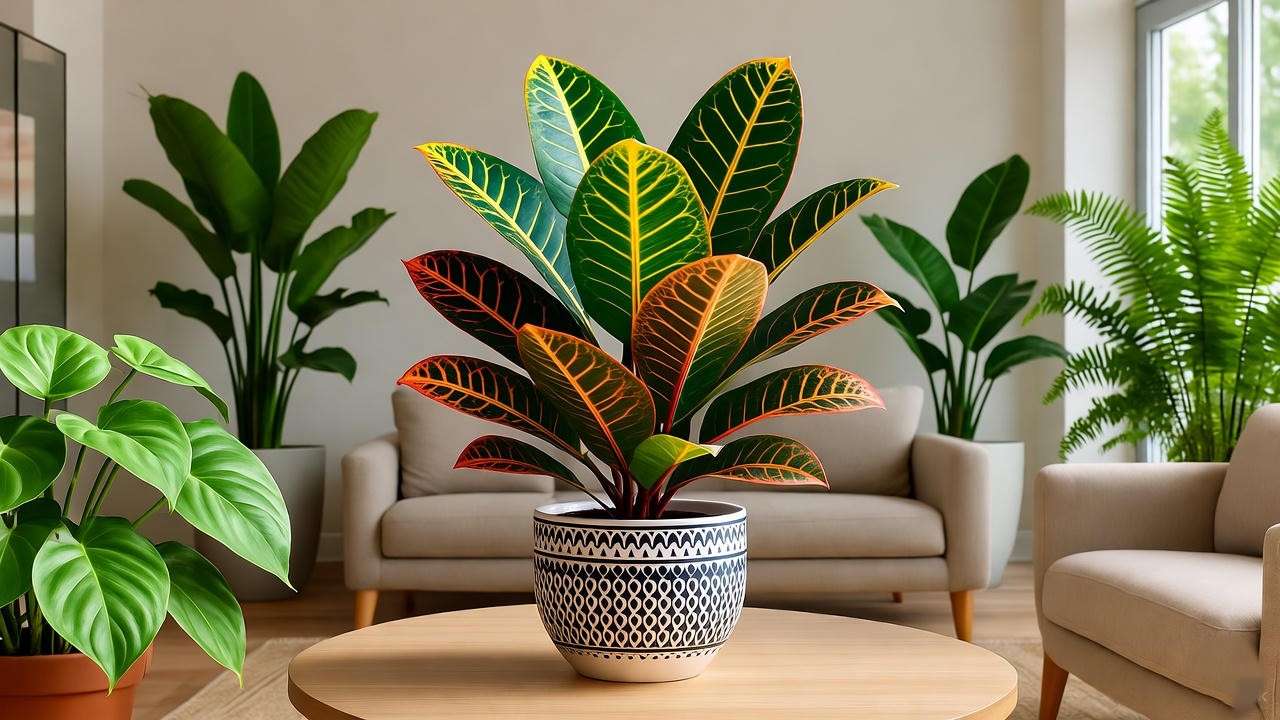
6.2 Outdoor Landscaping
In warm climates (USDA Zones 9–11), banana crotons thrive outdoors as garden or patio plants. Their tropical aesthetic makes them ideal for:
- Tropical Garden Beds: Plant alongside hibiscus, bird of paradise, or elephant ears for a vibrant, jungle-inspired landscape.
- Patio Focal Point: Use in large containers on shaded patios or balconies to add color without overwhelming the space.
- Hedge or Border: Group multiple crotons for a low, colorful hedge in partial shade.
Outdoor Tip: Ensure outdoor crotons receive dappled sunlight or morning sun with afternoon shade to prevent leaf burn. Mulch around the base to retain soil moisture.
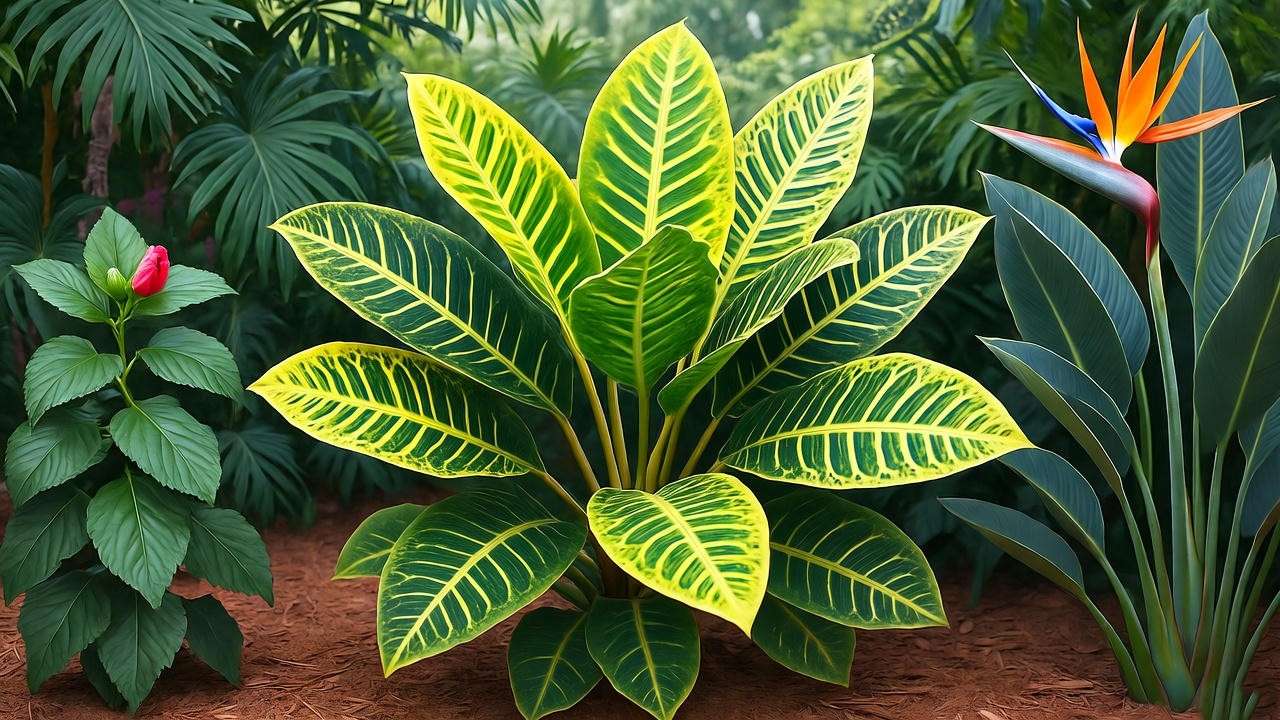
7. Expert Insights and Pro Tips 🧑🌾
To elevate your banana croton care, I consulted Dr. Emily Carter, a horticulturist with over 15 years of experience in tropical plants. She shares, “Banana crotons are forgiving if you understand their needs. Prioritize light and humidity, and don’t be afraid to experiment with placement to find their happy spot.”
Advanced Techniques:
- Seasonal Light Adjustments: In winter, when daylight hours decrease, move your croton closer to a light source or supplement with a grow light to maintain vibrant foliage.
- Encouraging Variegation: While banana crotons are primarily yellow-green, slight variegation (e.g., orange or red streaks) can emerge with optimal light. Experiment with brighter indirect light to enhance these patterns.
- Sustainability: Opt for eco-friendly pots made from recycled materials or terracotta, and use organic fertilizers like compost tea to reduce environmental impact.
Myth-Busting: A common misconception is that crotons are highly toxic. While ingesting leaves can cause mild stomach upset in pets or children, touching the plant is harmless. Always keep plants out of reach of curious pets or kids to be safe.
Pro Tip: If your croton’s leaves start to dull, try wiping them with a diluted neem oil solution (1 tsp per quart of water) to boost shine and deter pests simultaneously.
8. Frequently Asked Questions (FAQs) ❓
Here are answers to common questions about banana croton plant care, addressing popular search queries to ensure comprehensive coverage.
Q: Why are my banana croton leaves losing color?
A: Fading leaves typically indicate insufficient light. Move your plant to a brighter spot with indirect sunlight (1000–2000 foot-candles) or use a grow light. Low humidity or nutrient deficiencies can also contribute, so check humidity levels and fertilize regularly during the growing season.
Q: Are banana croton plants pet-safe?
A: Banana crotons are mildly toxic if ingested, potentially causing stomach upset in pets or children. They’re safe to touch but should be placed out of reach of pets and kids.
Q: How often should I repot my banana croton?
A: Repot every 1–2 years or when the plant becomes root-bound (roots circling the pot). Choose a pot 1–2 inches larger in diameter with drainage holes, and refresh the soil with a well-draining mix.
Q: Can banana crotons grow in low light?
A: While they can survive in low light, their vibrant color fades, and growth slows. For best results, provide bright, indirect light or supplement with a grow light (e.g., 20-watt LED).
Q: Why is my banana croton drooping?
A: Drooping often signals underwatering, overwatering, or temperature stress. Check soil moisture (water if dry, drain if soggy) and ensure temperatures stay above 60°F. Adjust conditions and monitor for recovery.
Q: How do I increase humidity for my banana croton?
A: Use a humidifier (set to 60%), place a pebble tray with water beneath the pot, or mist leaves with distilled water 2–3 times weekly. Grouping plants together also boosts ambient humidity.
Q: Can I grow a banana croton outdoors year-round?
A: Yes, in USDA Zones 9–11, where temperatures stay above 50°F. Plant in partial shade and protect from direct sun or frost. In colder climates, bring indoors during winter.
9. Conclusion and Call to Action 🌈
Growing a vibrant banana croton plant is a rewarding journey that brings tropical beauty to your home or garden. By providing bright, indirect light, maintaining high humidity, watering wisely, and addressing issues like pests or leaf drop promptly, you’ll enjoy stunning, glossy foliage year-round. Whether you’re propagating new plants or styling your croton as a decor centerpiece, these expert tips—backed by horticultural science and years of hands-on experience—will set you up for success.
Ready to make your banana croton the star of your plant collection? Start applying these care tips today and watch your plant thrive! Share your croton success stories in the comments or tag us on social media with #BananaCrotonCare. For more plant care guides, explore our articles on “Top 10 Tropical Houseplants for Beginners” or “How to Create a Tropical Indoor Garden”. Subscribe to our newsletter for exclusive tips and updates to keep your green oasis flourishing! 🌿

